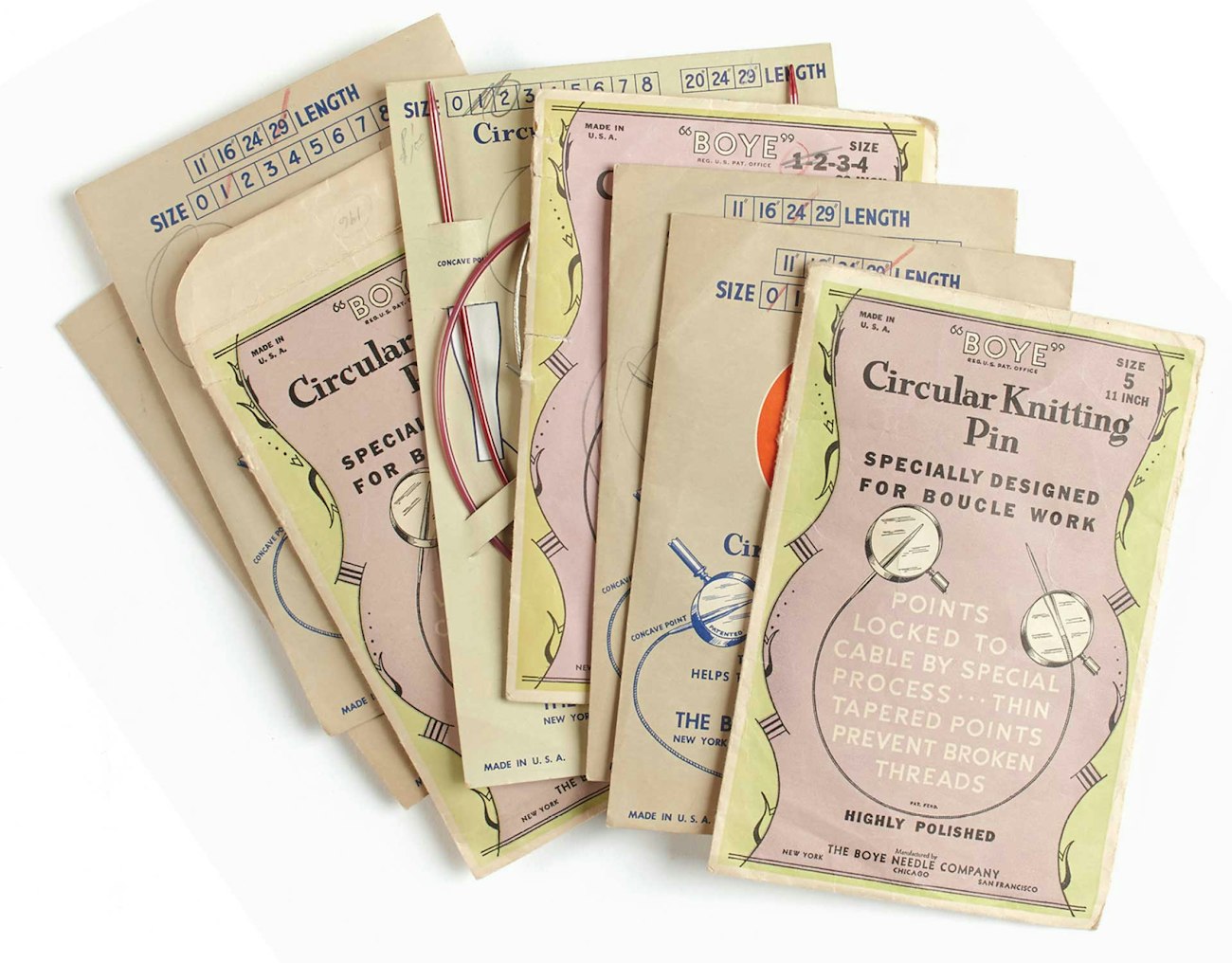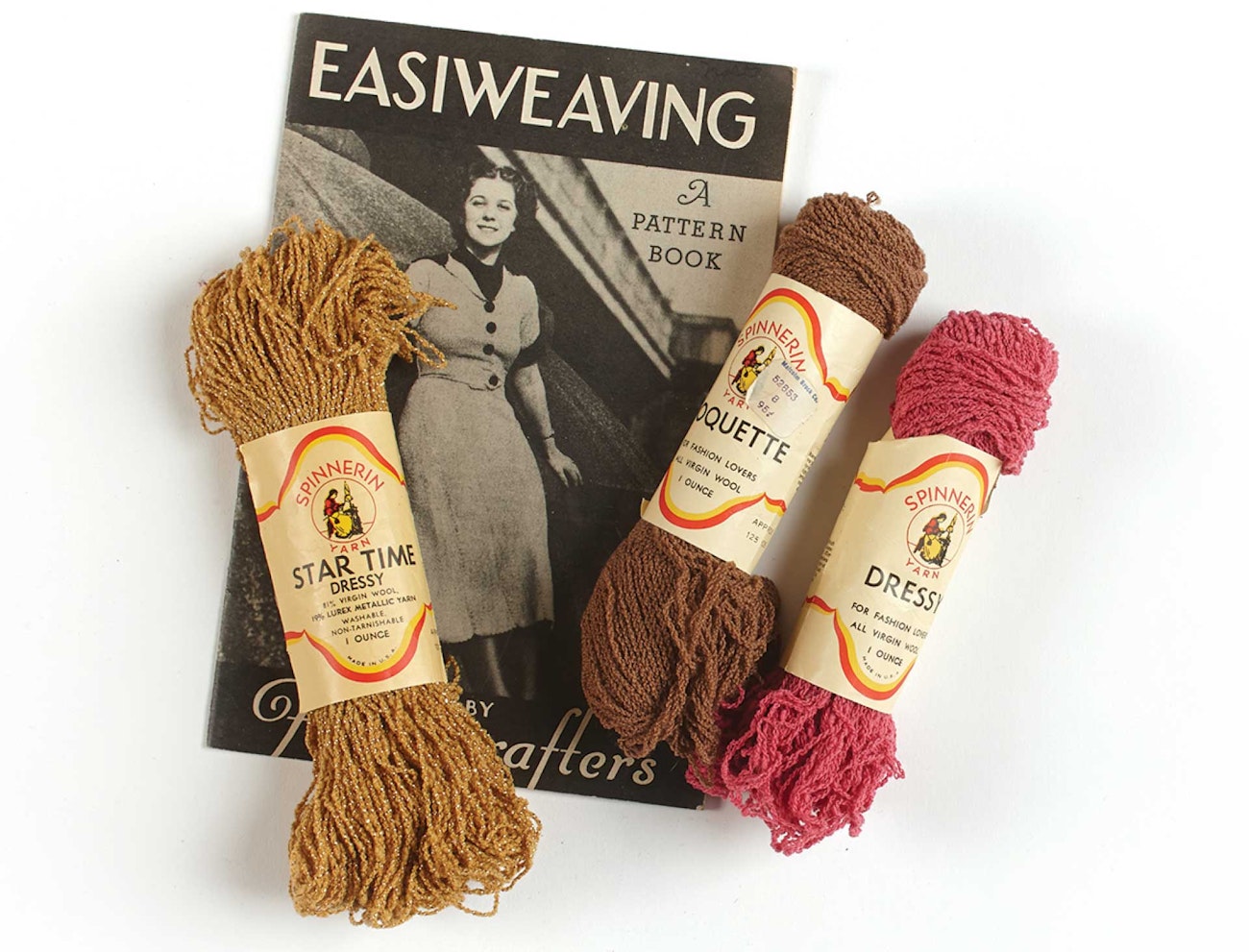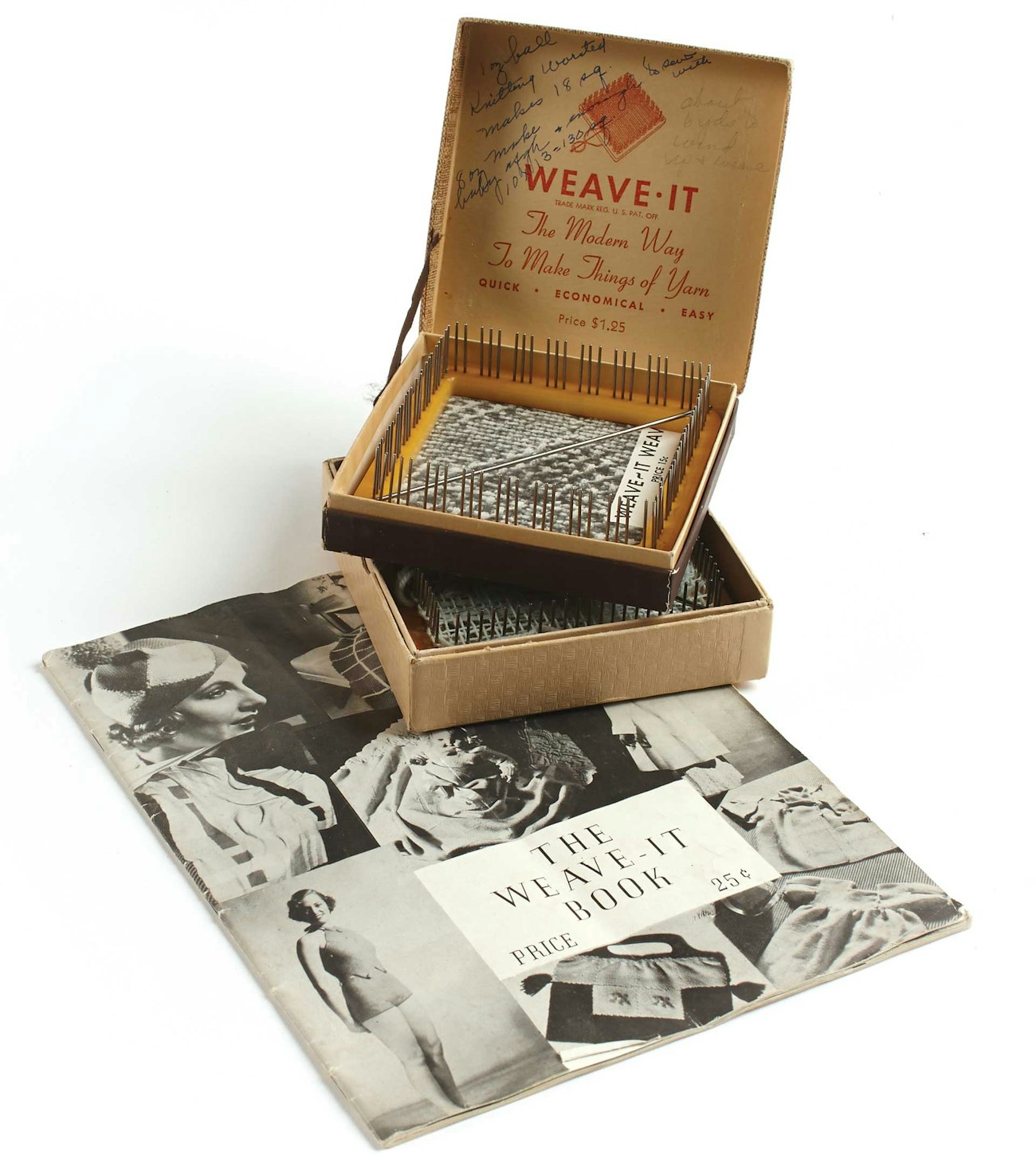Great-aunt Gladys Dunning, my grandmother’s younger sister, was born in 1901 on a grain farm in California’s Central Valley. Both girls were raised on that farm, and both spent their adult lives on farms and in small farming towns in the San Joaquin Valley, tending family, cooking, gardening, visiting, and busy with bridge clubs, friends, and church.

The suitcase that belonged to the author’s Great-aunt Gladys Dunning Thomas. All of the objects shown here and more were in the suitcase when the author discovered it following Gladys’s death.
Gladys graduated from the University of Southern California in 1925 and then taught in California public schools. At the time I knew her, she taught business classes, typing, shorthand, and accounting in the high school in the farming community where she and her husband, Merrill Thomas, had settled. She was childless, and so we, her sister’s children and grandchildren, were her family.

Boye knitting pin and stitch gauge for double-pointed steel needles and standard knitting needles from the author’s collection of needlework supplies that belonged to her Great-aunt Gladys Dunning Thomas.
After my grandmother died, our family often had Sunday dinner at the Thomas’s; I remember that the dining-room table was always set with hand-embroidered linens, cloth napkins, and hand-crocheted lace tablecloths, but whether Gladys made any of these herself I don’t know. I do know that she was an accomplished knitter in earlier days, but she had given up knitting by the time my sister and I picked up needles. Nevertheless, she would reminisce, advise, and comment about our projects: having been a teacher, she was accustomed to instructing.

Assortment of Boye circular knitting pins from the author’s collection of needlework supplies that belonged to her Great-aunt Gladys Dunning Thomas.
After the deaths of Gladys and her husband, they left five nephews and a niece as heirs. One nephew was executor of the estate, and after he had taken care of the specific bequests, he called for volunteers to clean out the rooms in their house; he assigned my sister and me the guest room.

Star Time “Dressy” metallic yarns from Spinnerin Yarns and an Easiweaving pattern book published by Fellowcrafters from the author’s collection of needlework supplies that belonged to her Great-aunt Gladys Dunning Thomas.
We were routinely sorting everything into piles to give away, keep for the family to divide, or leave for the executor to decide about when I opened the old travel case shown here and discovered some thirty years’ worth of Gladys’s knitting, tatting, small-loom weaving, stored together with yarns and booklets and personal notes. I regretted that we had never had a chance to talk about what she made or see photographs of her wearing the suits and dresses she had knitted.
I saved the suitcase and its contents, thinking that I might use the circular knitting needles, but the cables proved to be too wiry and stiff. But in one of the case’s pockets, along with a cake of soap and a hairnet, I found a knitted washcloth, a reminder of Gladys’s love of travel throughout her life.

The Weave-It Book, published in 1936 and the Weave-It loom by Donar Products Corporation, Medford, Massachusetts, from the author’s collection of needlework supplies that belonged to her Great-aunt Gladys Dunning Thomas.
I don’t know when she knitted this cloth, but I have used it for more than twenty years, ever since I found it in the case. It has been handy to have a cloth of my own while traveling; it’s sturdy and a good scrubber, can be moistened to cool the neck or eyes on hot days, and dries quickly. It fits into a small corner in my own suitcase, and that’s where I keep it, waiting for my next venture.
Sara Lamb is happiest spinning, weaving, and dyeing, activities which provide enough variety to keep her entertained and her days full. She is currently striving to finish all the things. This will never happen.
This article was published in the November/December 2013 issue of PieceWork.

